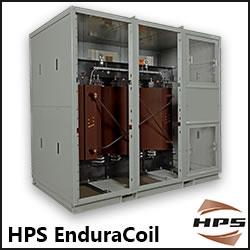PROTECT YOUR DNA WITH QUANTUM TECHNOLOGY
Orgo-Life the new way to the future Advertising by AdpathwayHow Does IP Rating Determine the Lifespan of Inverters?
IP ratings (per IEC 60529, marked IP XY; X: 0-6 solid protection, Y: 0-8 water protection) greatly impact inverter lifespan. Dust reduces heat dissipation, accelerating component aging; water causes short circuits/corrosion. High-dust/humidity/coastal areas need ≥IP65, boosting MTBF by 20%-30%. Global standards like NEMA (US), JIS (Japan), GB/T (China) relate to IP. E.g., IP65≈NEMA 4X (salt-fog resistant)≈JIS IPX5. Environment-specific ratings: deserts need IP66-67 (+25% lifespan), coastal IP67/NEMA 4X (+30-40%). A coastal plant's failures dropped after upgrading to IP67+NEMA 4X. Select per location, maintain regularly for PV project ROI.
A Deep Analysis of Global Standard Comparisons: The IP rating is defined by the IEC 60529 standard document developed by the International Electrotechnical Commission (IEC), and it is commonly identified as IP XY. Here, X represents the protection level against solid foreign objects (0-6), and Y represents the protection level against water (0-8).
Impact of Dust Resistance on Inverters:During normal operation of inverters, dust intrusion can adhere to heat dissipation fins and circuit boards, reducing heat dissipation efficiency. This leads to increased operating temperatures of components such as IGBTs and film capacitors, accelerating their aging process. Prolonged high temperatures can cause the built-in fan to operate frequently. If the fan fails, heat dissipation will be further weakened, creating a vicious cycle.
Impact of Water Resistance on Inverters: Water vapor, condensation, or direct water ingress can cause short circuits in circuit boards, insulation breakdown, and corrosion of metal components. In coastal or high-humidity areas, inverter models with insufficient water resistance are prone to internal corrosion, significantly increasing the risk of internal component failures.
Therefore, in high-dust, high-humidity, or coastal salt-fog environments, it is recommended to select inverters with at least IP65 or higher ratings. This can effectively increase the Mean Time Between Failures (MTBF) by 20%-30%.
Overview of Global Protection Standard Comparisons
Standard System Applicable Region/Organization Designation Method Typical Rating Equivalence
IEC/IP International Electrotechnical Commission (IEC) IPXY IP65 ≈ NEMA 4X
NEMA National Electrical Manufacturers Association (North America) Type 1-13 Type 4X (Dust-proof, Water-jet Proof)
JIS Japanese Industrial Standards (JIS) JIS C 0920 IP65 ≈ JIS IPX5
GB/T Chinese National Standards GB/T 4208 Corresponding to IEC 60529
NEMA Type 4X vs. IP65
NEMA Type 4X focuses on salt-fog corrosion resistance, making it suitable for coastal and chemical industrial environments; IP65 emphasizes protection against water jets and complete dust prevention.
JIS Protection Ratings
JIS ratings are mutually recognized with IP ratings but have minor differences in testing methods (such as spray angle and pressure). JIS-certified models are widely used in coastal areas of Japan. For projects in coastal or chemical industrial parks, prioritize products with NEMA 4X certification; when entering the Japanese market or collaborating with Japanese-standard manufacturers, pay attention to the details of the JIS standard system.
Lifespan Projections for Inverters in Different Environments
Environment Type Recommended Protection Rating Typical Failures Average Lifespan Extension Rate
Urban Rooftops IP54-IP65 Fan failure, dust blockage in heat sinks +10%
Deserts, High-Wind Areas IP66-IP67 Sand erosion, PCB surface degradation +25%
Coastal, Salt-Fog Areas IP67/NEMA 4X Corrosion, seal aging +30-40%
Cold and Humid Regions IP65-IP67 Condensation-induced short circuits, seal failure +20%
Case Study:
A coastal photovoltaic power plant initially used IP54 inverters and experienced 12 internal corrosion failures within 3 years. After upgrading to IP67+NEMA 4X models, only 1 fan failure occurred within 2 years, significantly extending equipment lifespan.
Selection and Maintenance Recommendations
Selection Criteria: Choose IP ratings based on the climatic characteristics (dust concentration, humidity, salt fog, extreme temperature differences) of the project location. Within the budget, select the IP rating and certification combination that best fits the operating conditions. Prioritize models with dual certifications (e.g., IEC/IP + NEMA/JIS).
Daily Maintenance: Regularly clean heat dissipation fins and filters to ensure normal ventilation; periodically inspect seals and terminal box screws for looseness, and apply protective coatings when necessary. For coastal projects, perform internal salt-fog removal at least once every six months.
The IP rating is not just a marketing gimmick; it truly determines an inverter's viability in complex environments. Optimizing lifespan and reliability requires selecting the right rating, implementing proper maintenance, and using data analysis. Facing increasingly diverse on-site conditions, the selection of inverters should involve systematic assessment of environmental risks and the development of personalized selection and operation & maintenance plans to maximize the return on investment in photovoltaic projects.
Featured Product

HPS EnduraCoilTM Cast Resin Medium Voltage Transformer
HPS EnduraCoil is a high-performance cast resin transformer designed for many demanding and diverse applications while minimizing both installation and maintenance costs. Coils are formed with mineral-filled epoxy, reinforced with fiberglass and cast to provide complete void-free resin impregnation throughout the entire insulation system. HPS EnduraCoil complies with the new NRCan 2019 and DOE 2016 efficiency regulations and is approved by both UL and CSA standards. It is also seismic qualified per IBC 2012/ASCE 7-10/CBC 2013. Cast resin transformers are self-extinguishing in the unlikely event of fire, environmentally friendly and offer greater resistance to short circuits. HPS also offers wide range of accessories for transformer protection and monitoring requirements.






















 English (US) ·
English (US) ·  French (CA) ·
French (CA) ·